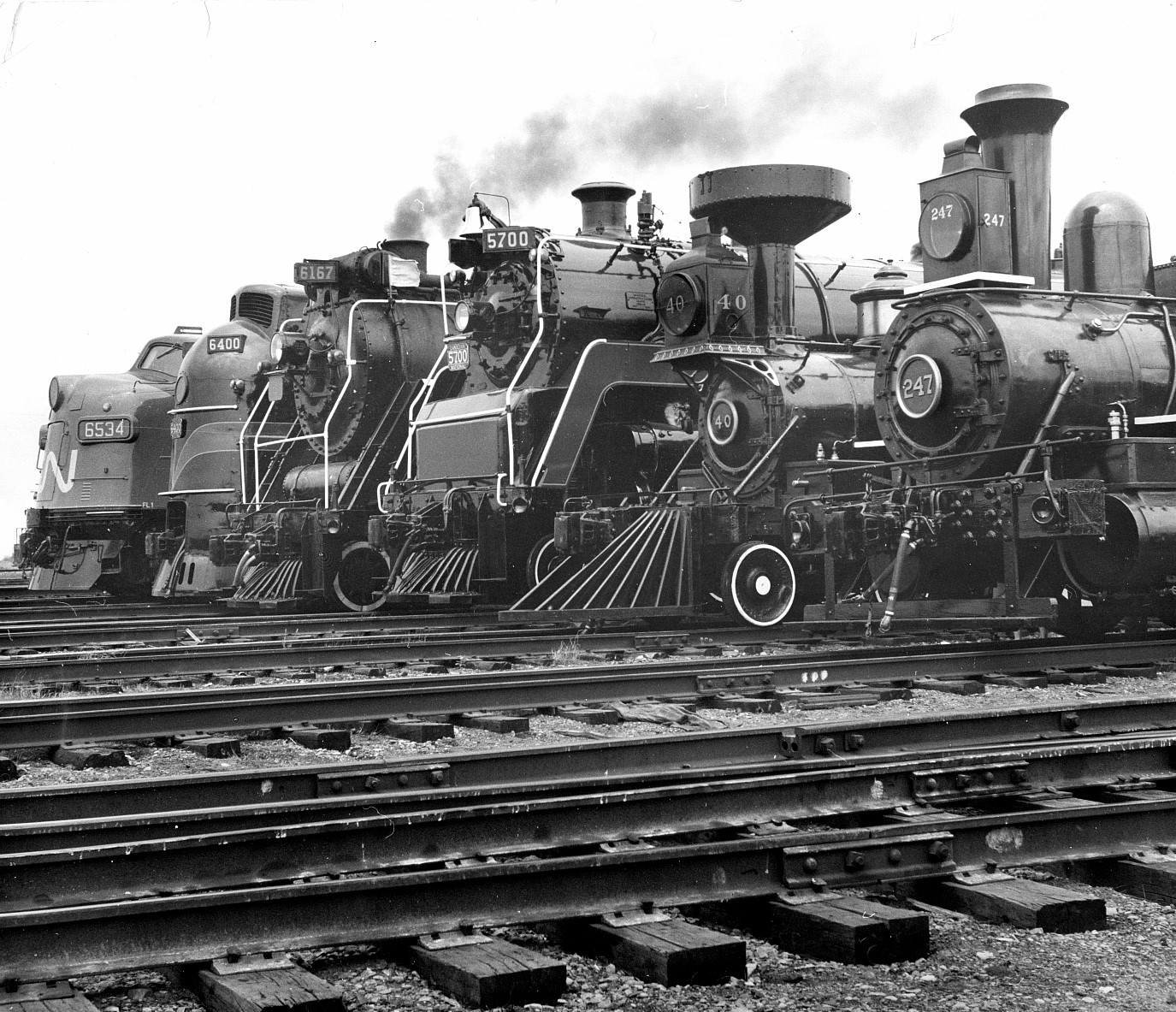Over 170 Years of Railway History
Railways have been a fixture in Toronto since the first train departed from the foot of Bay Street in 1853. Below you will find a timeline of events, briefly summarizing the most important moments in Toronto’s railway history. For more in-depth information please see our blog and the history section of our website.
May 16th, 1853
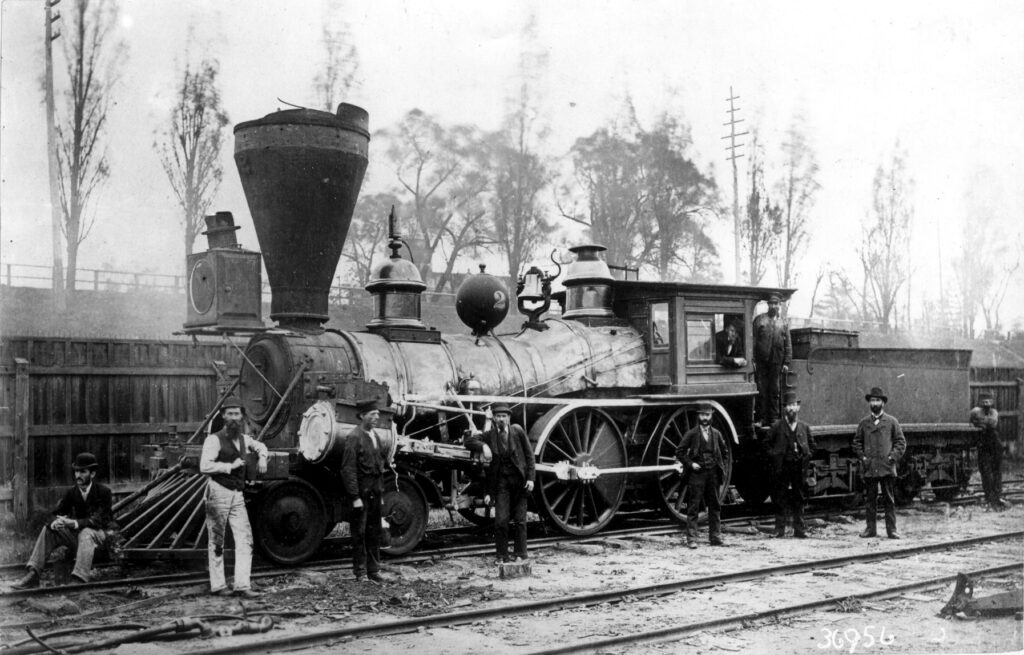
First Train Leaves Toronto
The Ontario, Simcoe & Huron Railway opened on this date from Toronto to Aurora. It was Toronto’s first railway and the first steam-powered railway in Canada West, now Ontario. The inaugural train was led by locomotive no. 2 (pictured), the first locomotive ever built in Canada, and included two boxcars, a passenger coach, and a combination baggage-passenger car.
June 21st, 1858
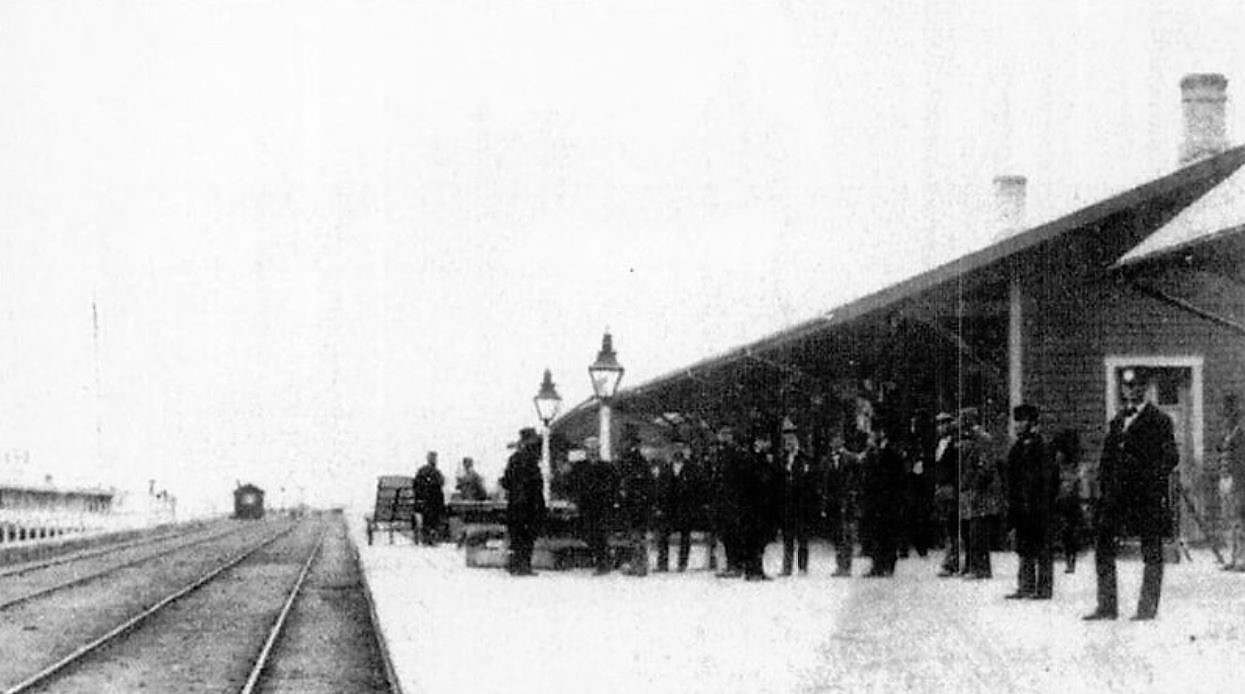
First Union Station Opens
Originally intended to be a far more extravagant terminal to meet Toronto’s needs, plans for our first Union Station were significantly scaled back due to an economic crisis. It was served by all three railway companies present in Toronto at the time.
July 13th, 1871
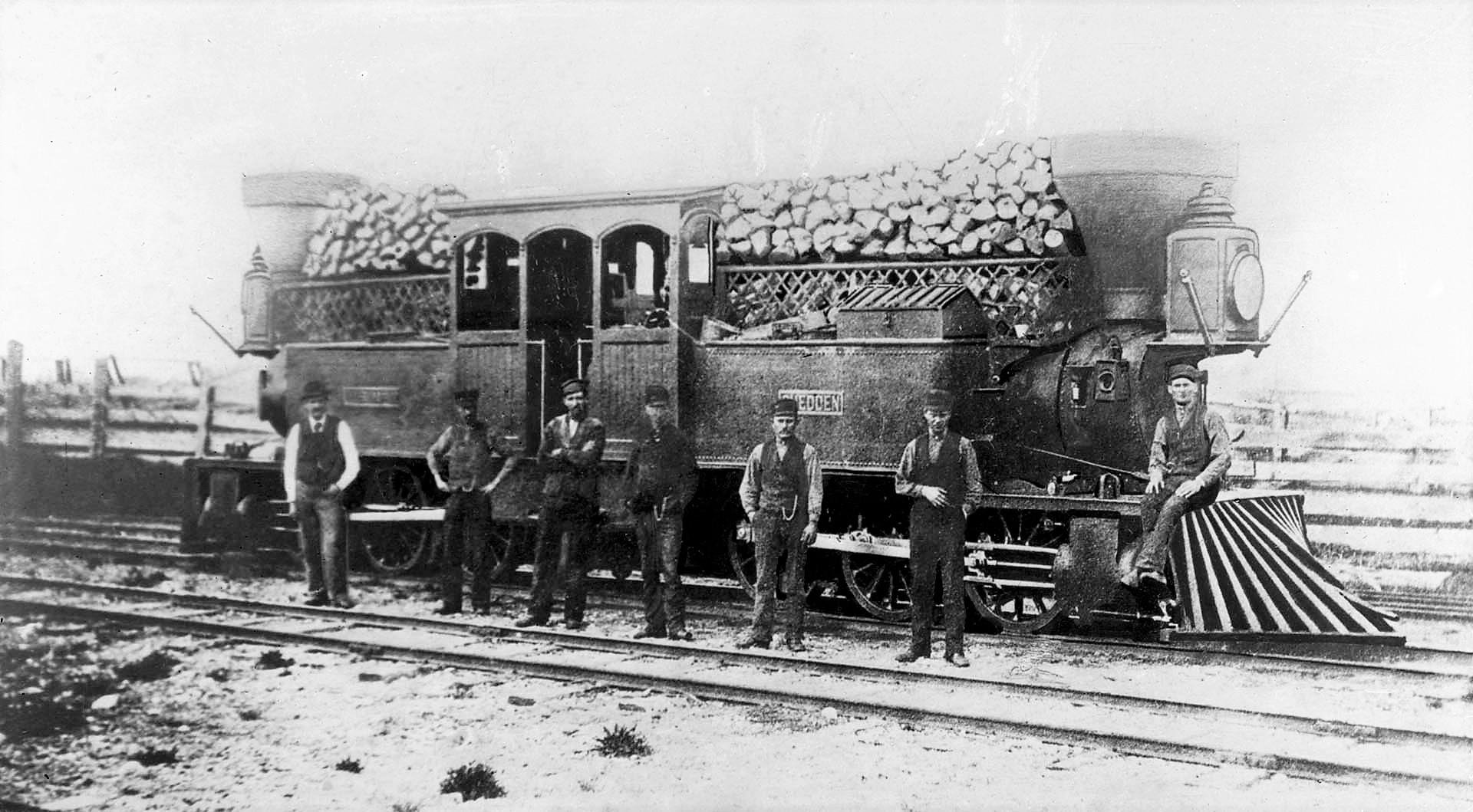
First Narrow Gauge Railway
Until the early 1870’s, the dominant gauge in Canada was 5′ 6” provincial gauge, while the more popular gauge south of the border was smaller 4′ 8.5” standard gauge. The 3′ 6” Toronto & Nipissing Railway was the first public narrow gauge railway in North America, commencing regular passenger service between Uxbridge and Toronto on this date.
July 1st, 1873
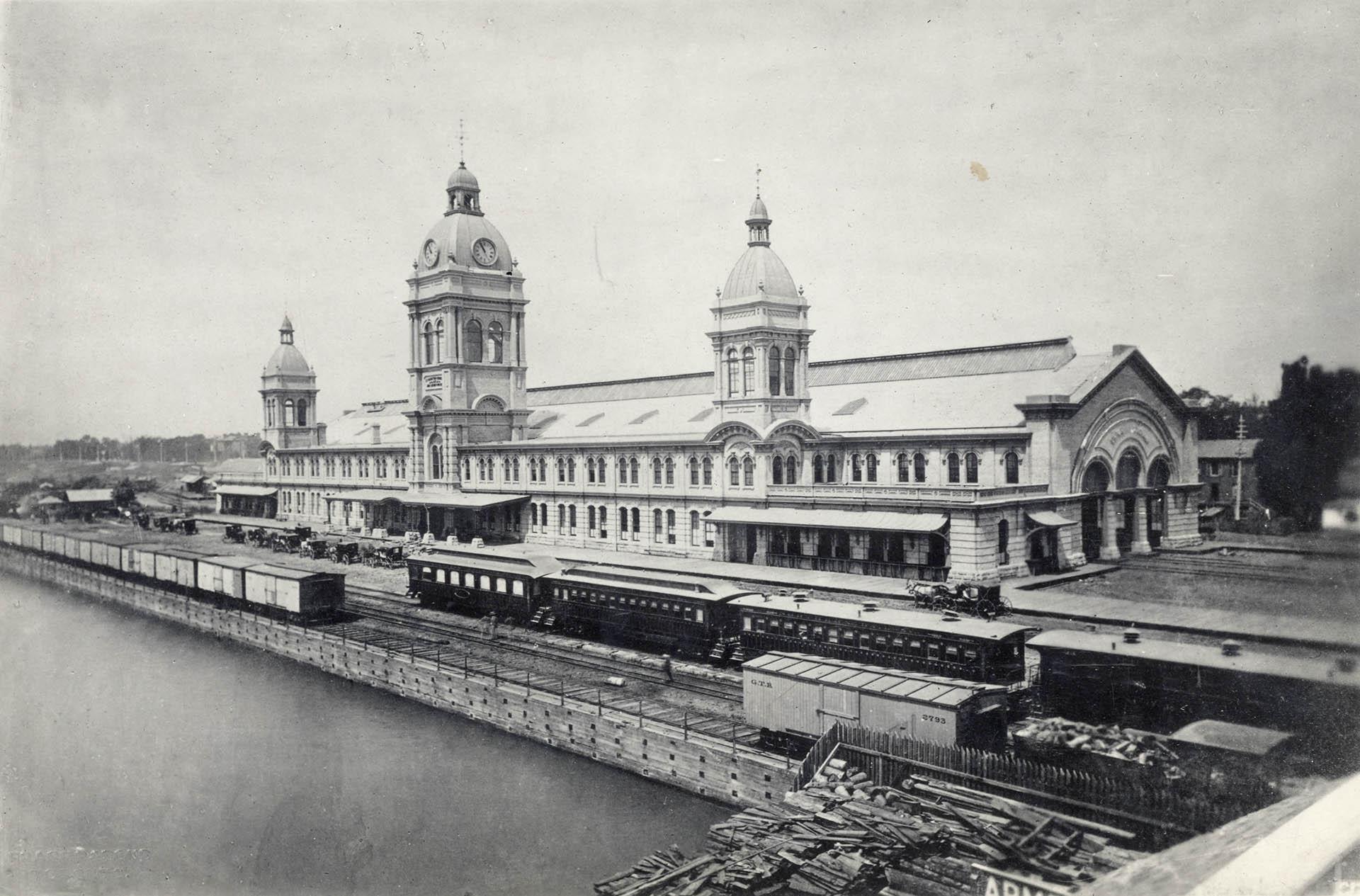
Second Union Station Opens
Described at the time as “one of the most modern and handsome stations on the continent”, Toronto’s second Union Station was a vast improvement over the first, but still left a lot to be desired. It was served by five different railway companies upon opening.
June 28th, 1886
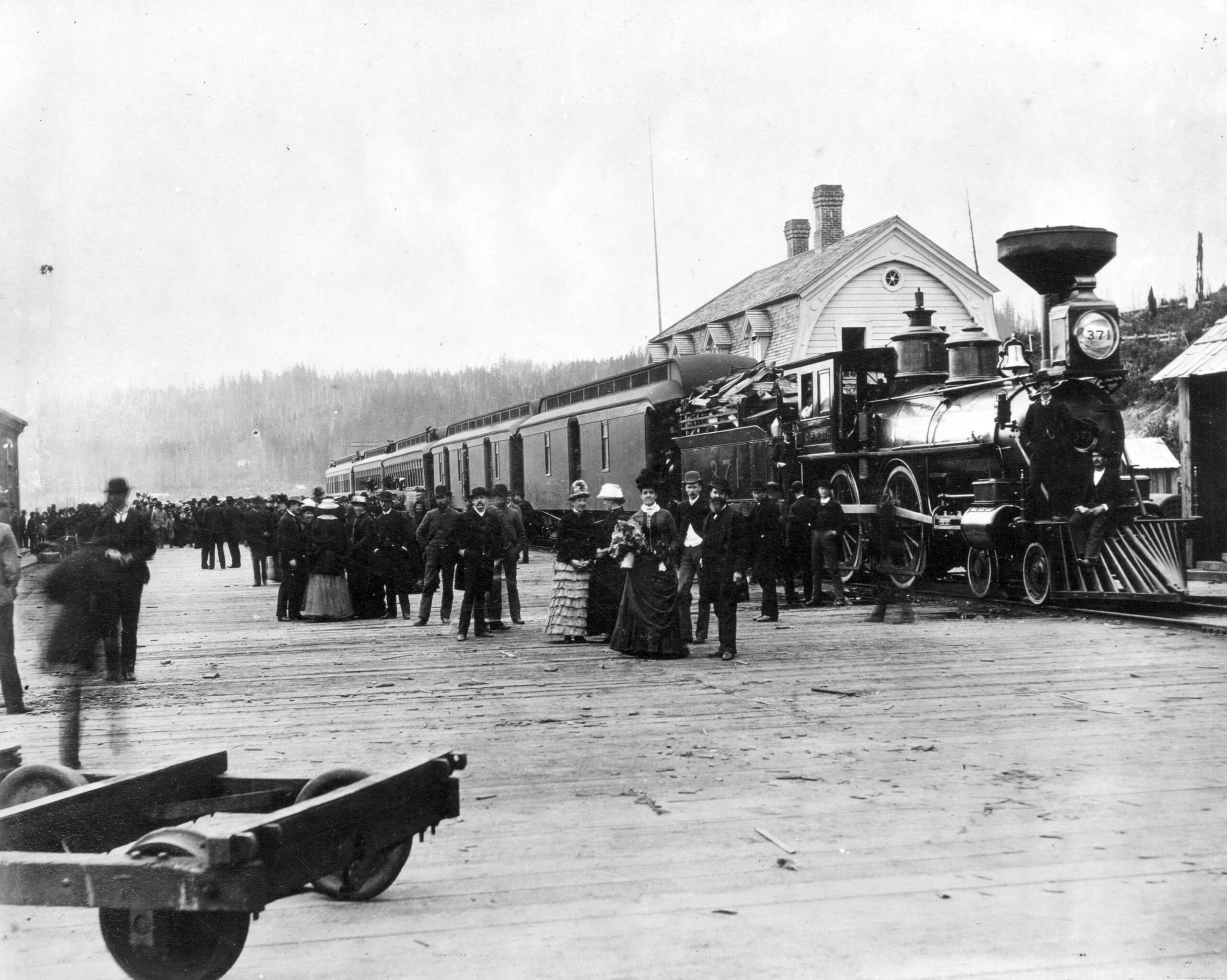
First Transcontinental Train Leaves Toronto
The Canadian Pacific Railway’s first train to the west coast departed Toronto and Montreal as two separate trains that joined in Carleton Place, Ontario. The Toronto train was led by locomotive no. 305 and consisted of the sleeping car Peterboro, a first class car, and a second class car. The train reached its destination of Port Moody, British Columbia on July 4th.
May 11th, 1896
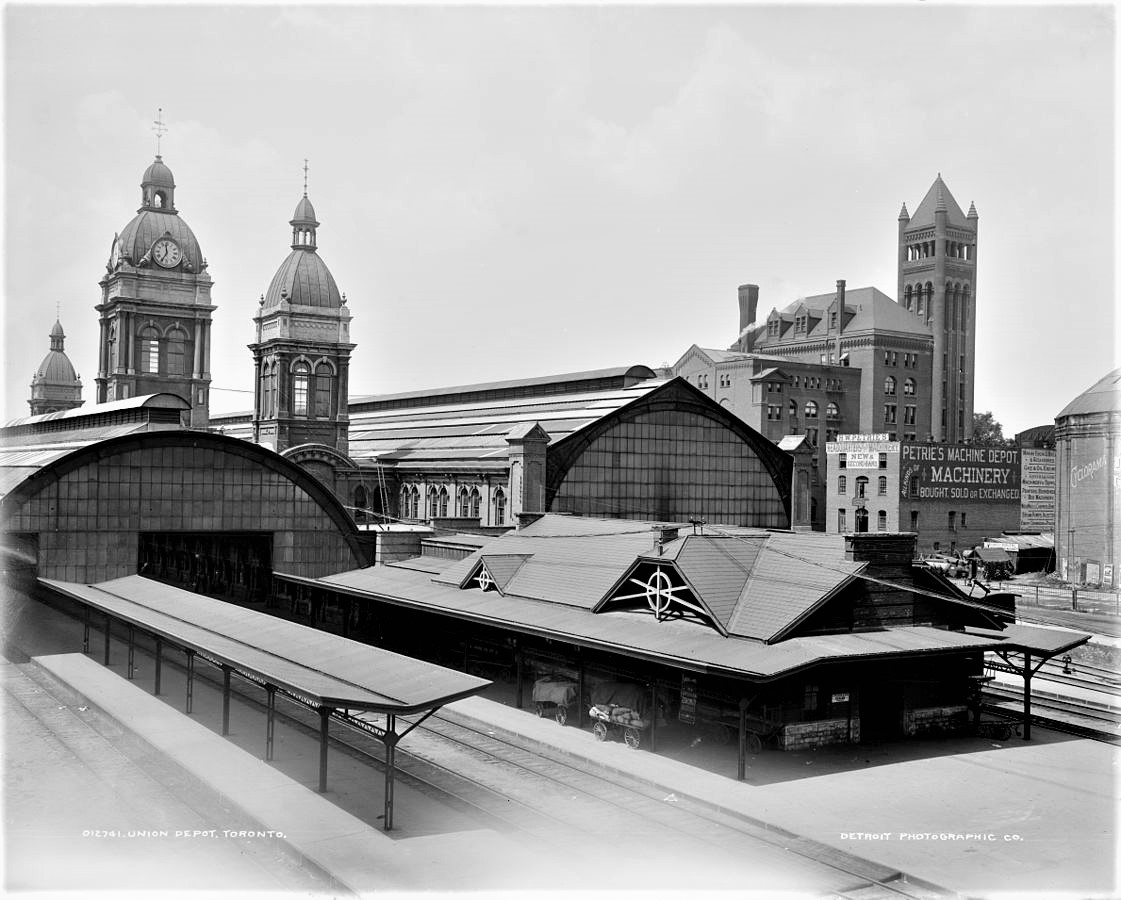
Union Station Expanded
After four years of renovations, an expansion of the 1873 Union Station was officially opened on this date. Necessitated by overcrowding, the expansions included a new entrance and office tower on Front Street and additional platforms.
June 14th, 1916
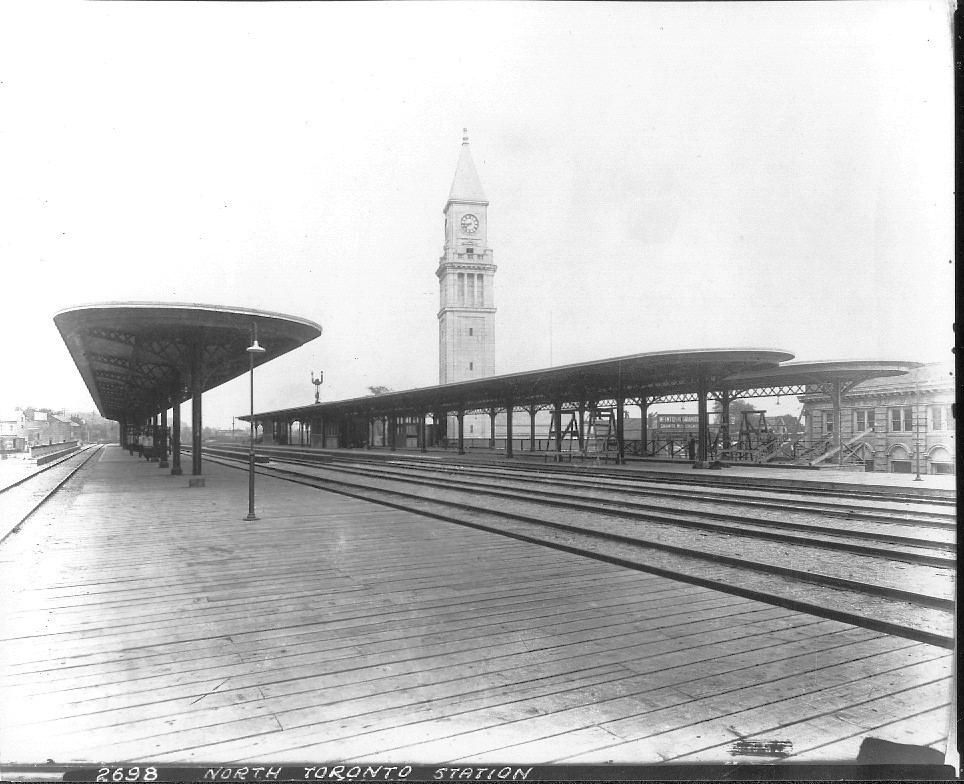
North Toronto Station Opens
The second North Toronto Station was a far larger facility than the one it replaced. Originally intended as a northern counterpart to Union Station, North Toronto saw far fewer trains than it was designed to handle. It was closed to passengers in 1930 but the building remains in its original location on Yonge Street.
June 6th, 1919
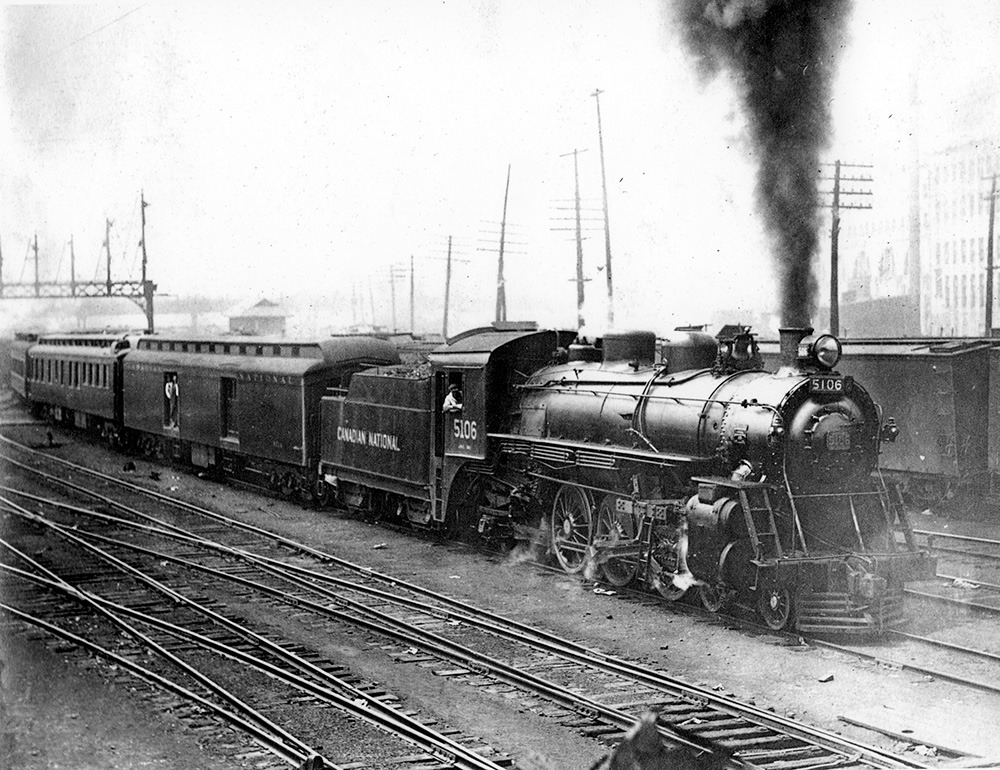
Incorporation of Canadian National Railways
Originally formed through an Order in Council on December 20th, 1918, the Canadian National Railways was created by the federal government to manage multiple bankrupt or struggling railway companies that had fallen into government hands. By 1923 it would include both the Canadian Northern and Grand Trunk systems.
August 6th, 1927
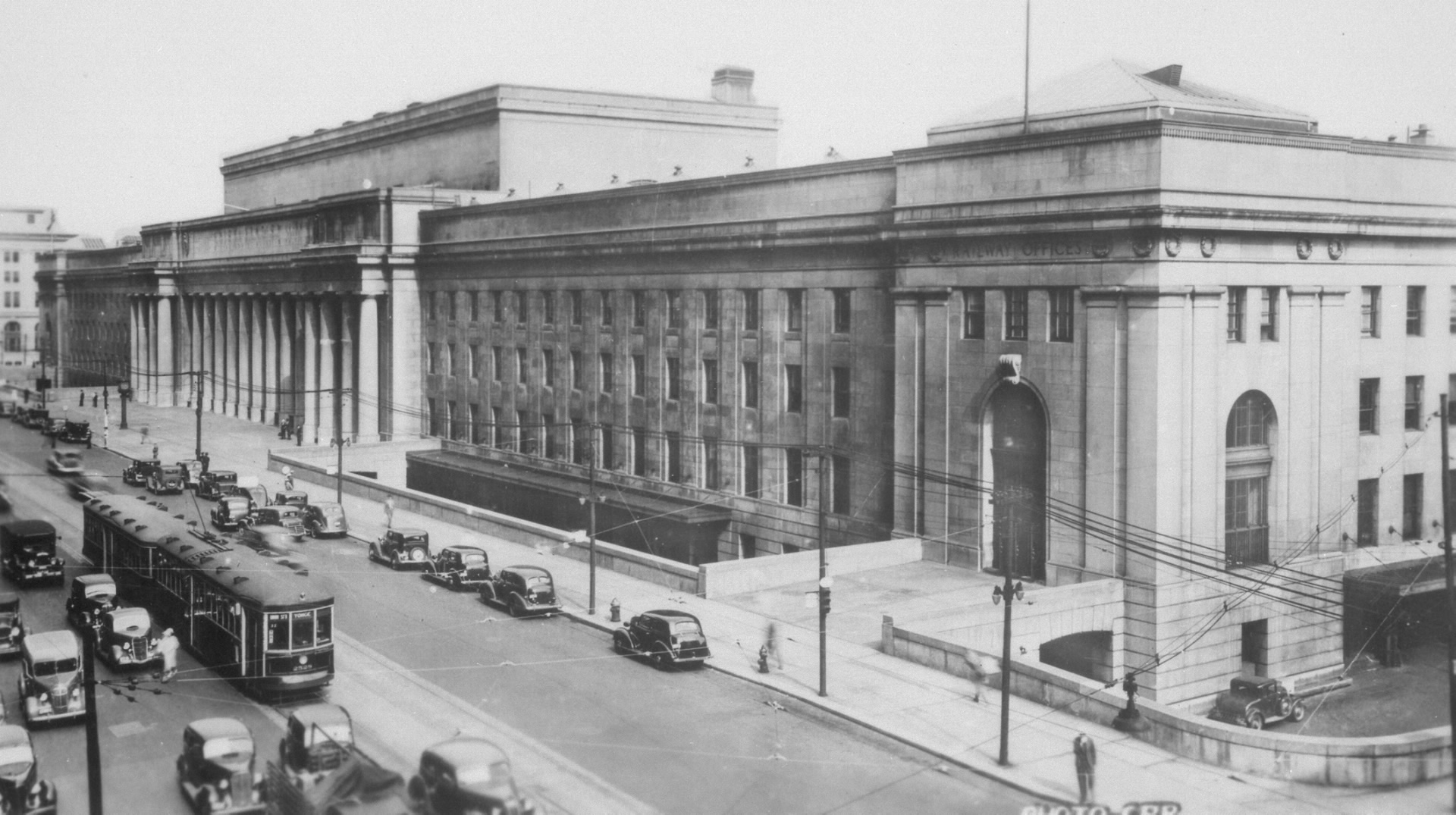
Third Union Station Opens
After 23 years of construction, Toronto’s third Union Station was officially opened on this date. However, it would take another three years for the new platforms to reach completion.
October 15th, 1929
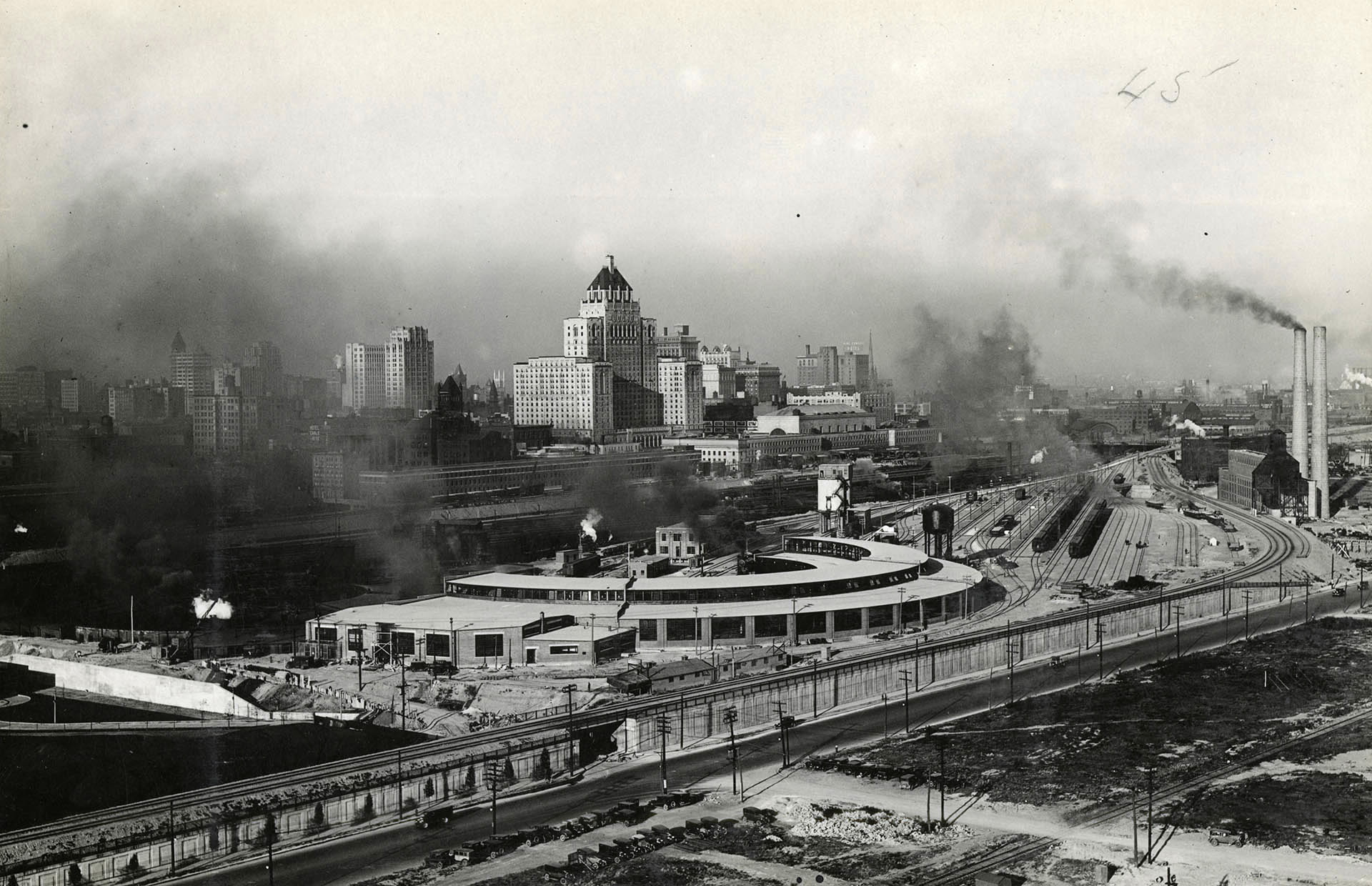
John Street Roundhouse Opens
The first 28 stalls of the John Street Roundhouse officially opened on this date, though it took until 1931 for the remaining four stalls to be completed. Surrounding a 120-foot turntable, this facility was easily one of the largest of its kind in the country. Our museum currently occupies stalls 15, 16, and 17 of this structure.
April 24th, 1955
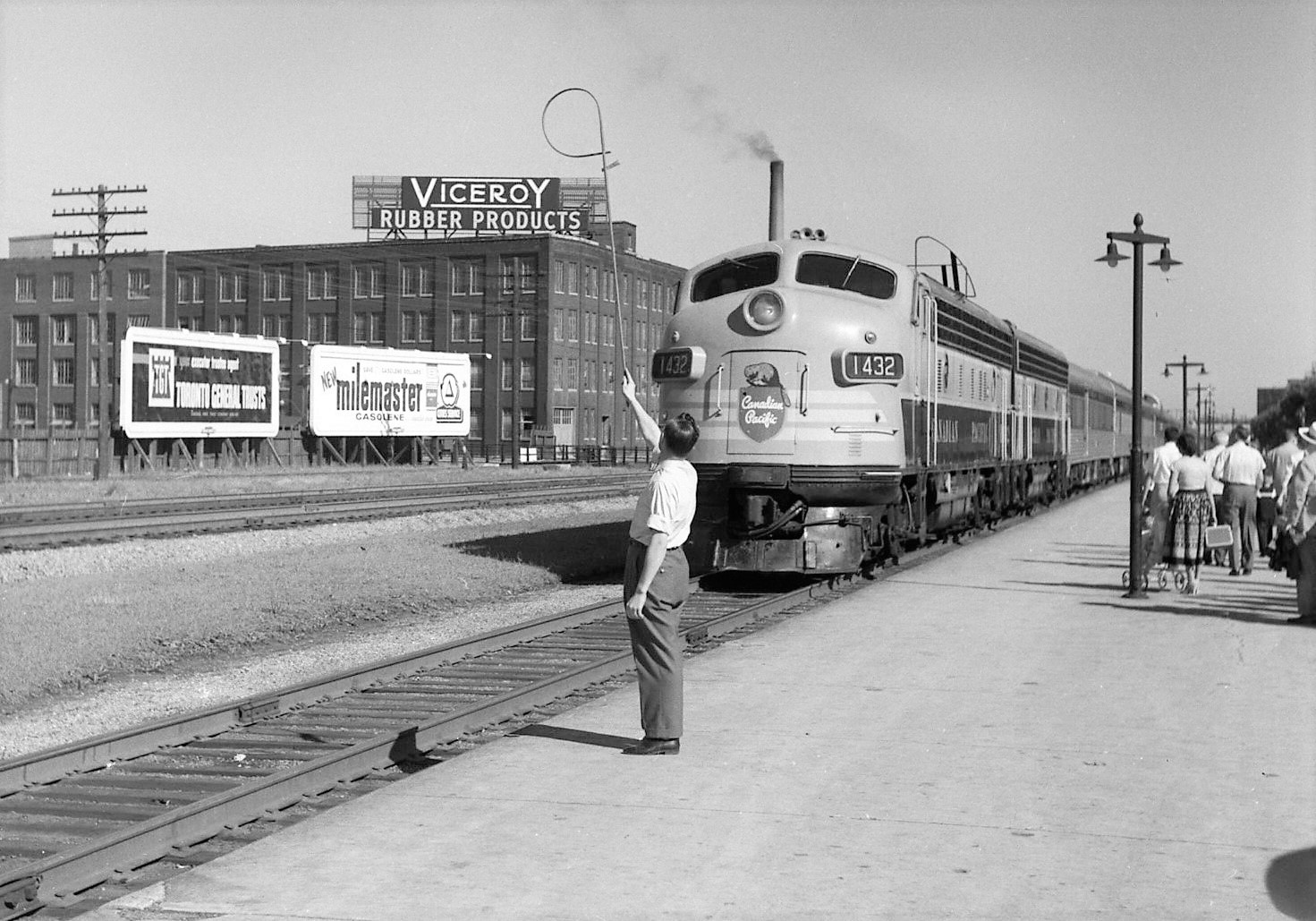
Inaugural Run of The Canadian
The Canadian was the official name given to Canadian Pacific’s newest transcontinental flagship train. Unlike its earlier transcontinental trains, The Canadian would exclusively make use of streamlined passenger cars manufactured by the Budd Company. Separate trains originating from Toronto and Montreal would join in Sudbury before proceeding westward. The train was assumed by VIA Rail in 1978 but retained its name and the original streamlined passenger cars.
May 23rd, 1967
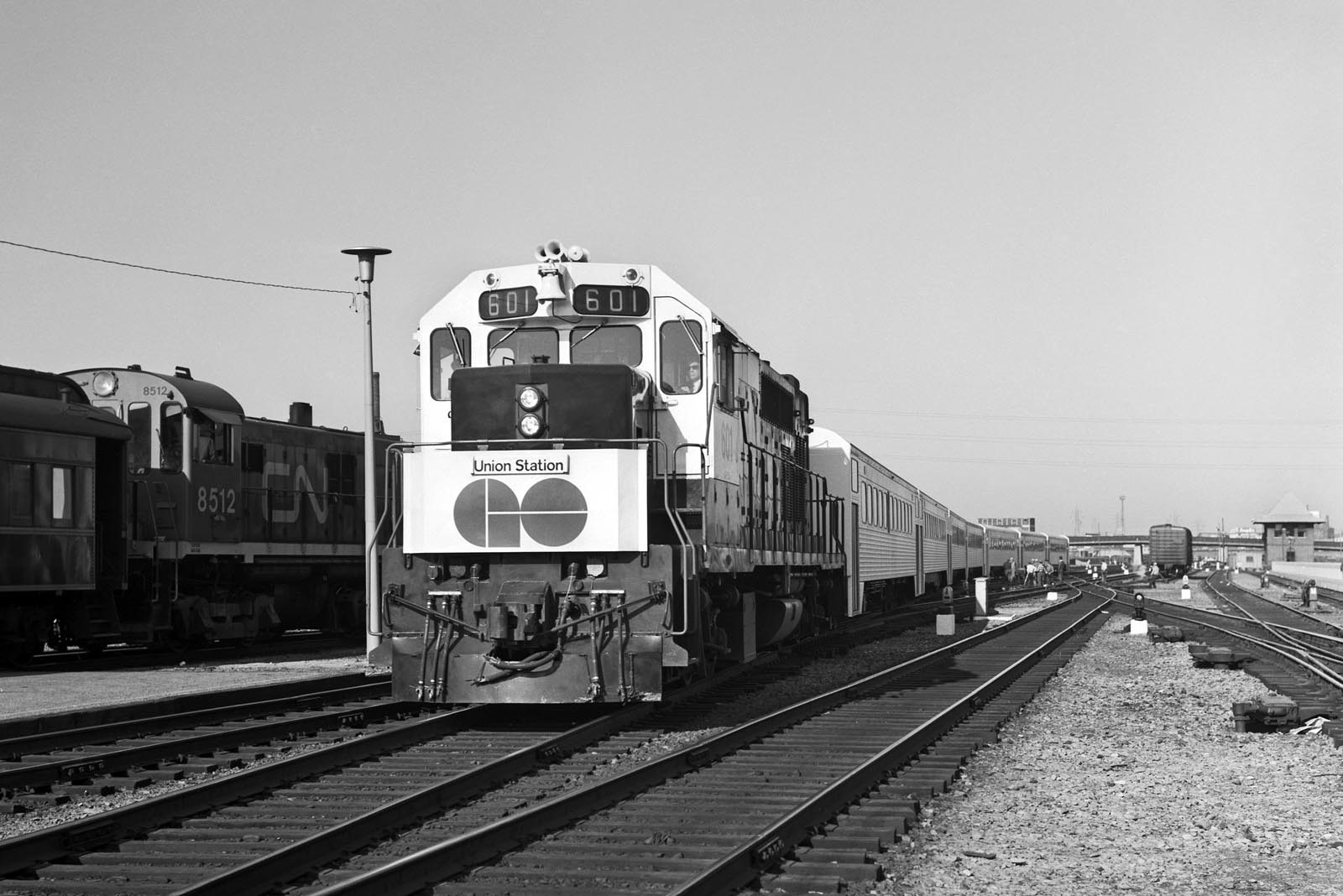
GO Transit Commences Operations
Between 1947 and 1962, passenger rail ridership in Canada declined by 56%. GO Transit was an initiative formed by Ontario’s provincial government to supplant Canadian National’s waning commuter service between Pickering and Oakville.
1975
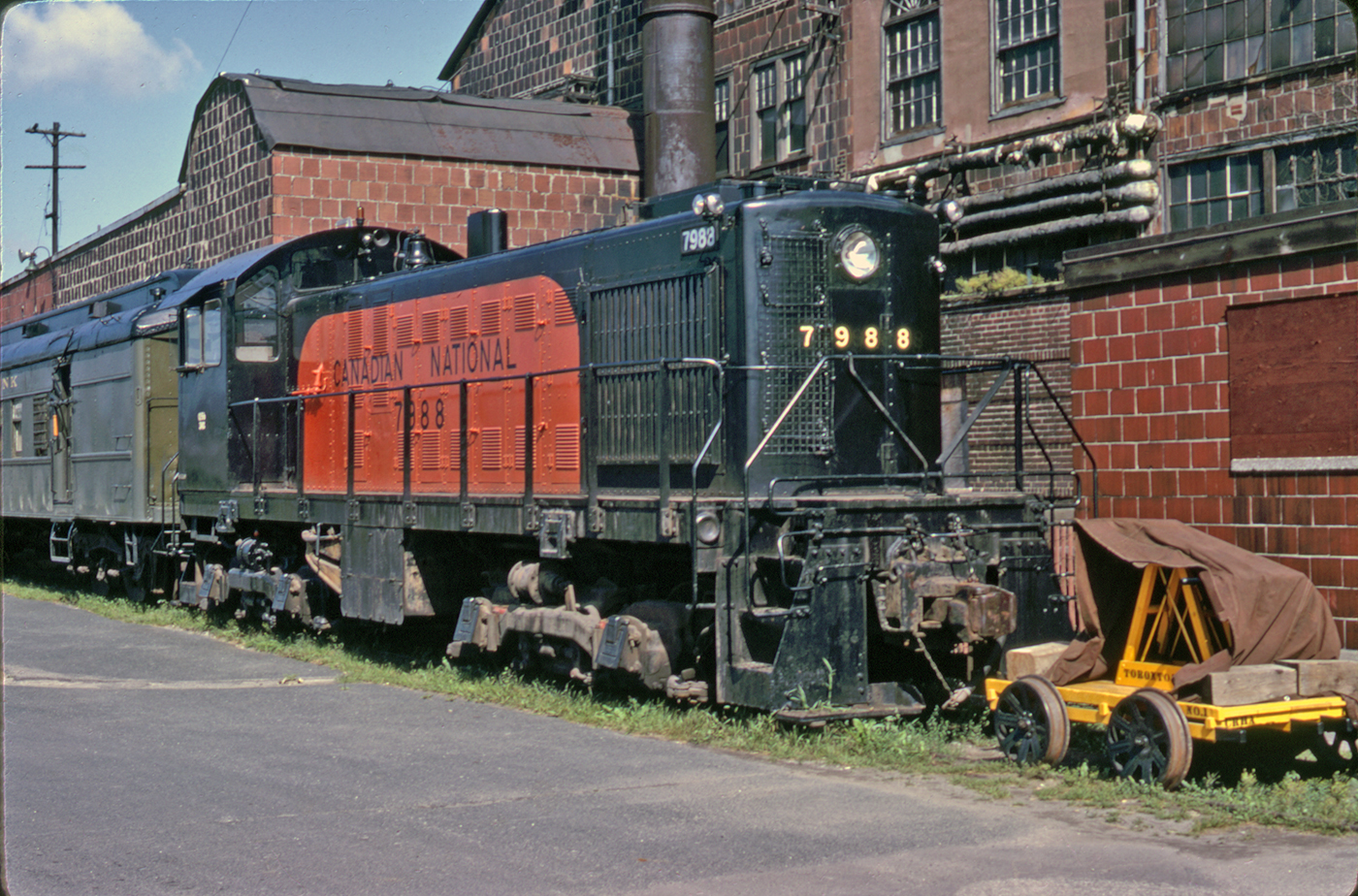
Toronto’s First Railway Museum Opens
The Toronto & York Division of the Canadian Railway Historical Association established Toronto’s first railway museum on the waterfront near the foot of Bathurst Street. It was unsuccessful and shut down only ten years later. Several pieces of rolling stock could not be sold off and were tragically destroyed. Others ended up in the hands of the city and became part of our museum’s collection in 2010.
January 12th, 1977
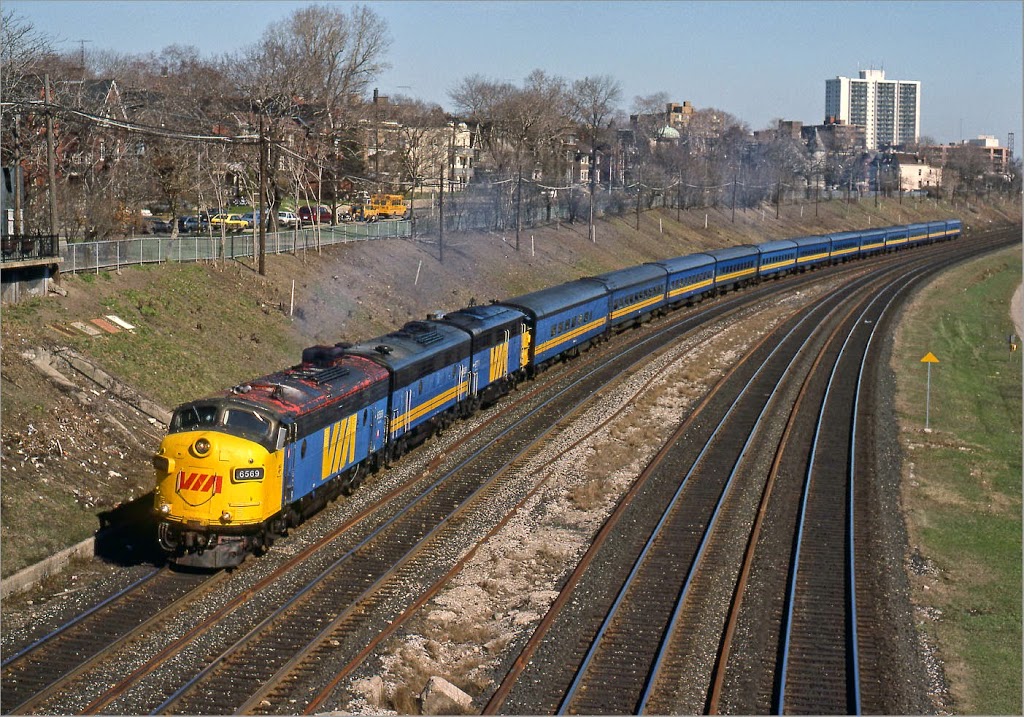
Formation of VIA Rail
For much of the same reasons behind the creation of GO Transit a decade earlier, CN’s remaining regional and long-distance passenger service was spun off as VIA Rail. CP’s passenger service was assumed by VIA on October 29th, 1978.
2001

Founding of the TRHA
The first public meeting of the Toronto Railway Historical Committee was convened at the Scarborough Model Railroad Club. Its goal was to promote the establishment of a railway museum at the John Street Roundhouse in Toronto. The organization changed its name to the Toronto Railway Historical Association in 2004 and incorporated as a charitable organization a year later.
May 29th, 2010
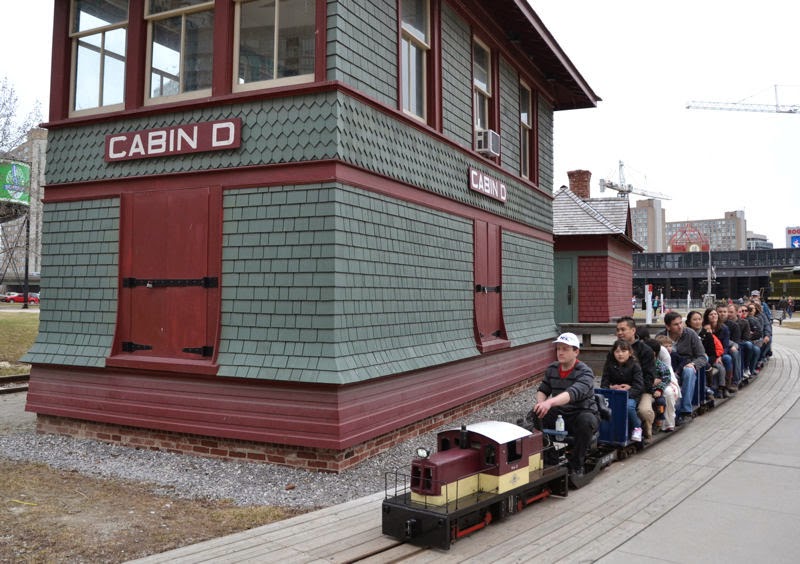
Toronto Railway Museum Opens
Originally called the Toronto Railway Heritage Centre, the Toronto Railway Museum first opened during Toronto’s Doors Open event in 2010. The museum itself only occupied three stalls of the John Street Roundhouse, but much of its collection was put on display outdoors in Roundhouse Park.


